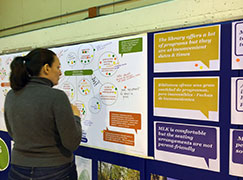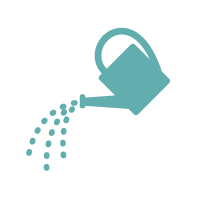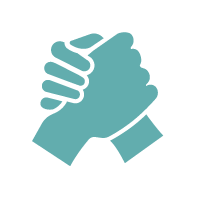Overview
The Rhode Island Department of Health is leveraging various federal, state, and local sources of prevention, categorical disease, and population health funding to create place-based “Health Equity Zones,” geographic areas designed to achieve health equity by eliminating health disparities and promoting healthy communities.
Who Took This On
Rhode Island Department of Health, Division of Community Health and Equity, Health Equity Institute
Ways You Can Get Started
- Use the Equity Pyramid to identify opportunities to align funding with upstream interventions
- Identify opportunities to leverage categorical disease, prevention, and population health funding for community-identified projects addressing the social determinants of health
- Convene a summit of health and non-health actors to identify ways to integrate equity across their work
See Advice for Local Health Departments below for more ways to take action.
What Sparked This?
Department leaders champion health equity
Over the past 2 decades, Rhode Island developed champions and leaders to support health equity within the Health Department, in the Governor’s Office, and increasingly in other State agencies.
In 2009, the then Director of the Rhode Island Department of Health (RIDOH) Division of Community Family Health and Equity (CFHE) attended the Weight of the Nation conference, where she heard the CDC Director present the “Health Impact Pyramid” as a framework for public health action. She was excited to leverage this nationally recognized framework to draw more state and local attention to health equity.
After modifying CDC’s tool to include a life course approach, emotional well-being, collaboration, integration, and partnerships, CFHE created the RI Equity Pyramid to inform work prioritization, allocate resources, and engage partners to advance health equity.
In 2015, RIDOH welcomed a new Director, who elevated the Department’s commitment to advancing health equity for all Rhode Islanders. The Director appointed the CFHE Director as the Executive Director of RIDOH, and together they developed and launched the Health Equity Institute, a new team within the Office of the Director that consisted of a realignment of 2 offices — the Office of Minority Health and the Office of Special Needs. RIDOH also consolidated its Centers of Health Promotion and Wellness, Chronic Disease, Perinatal and Early Childhood Health, Prevention Services, and Environmental Health into a new Division of Community Health and Equity.
Federal prevention funds lead to Integration Initiative and Strategic Framework
During this period, RIDOH received various federal funds, including from the American Recovery Reinvestment Act CDC Communities Putting Prevention to Work Initiative, Community Transformation Grant, and Healthy Communities. RIDOH launched an “Integration Initiative” to create a common vision of a healthy community, and to mobilize and leverage resources efficiently across categorical diseases, programs, data and analysis, and community-level interest and activity.
The Integration Initiative’s goals were to develop joint leadership and planning of quality initiatives with common outcomes, policies, and financing and implementation at the state and local levels. The Initiative was a critical step in the development of a collective vision to address health equity in Rhode Island.
Following the Integration Initiative, RIDOH developed a Strategic Framework for reducing health disparities and achieving health equity in Rhode Island. The Strategic Framework outlines 23 population health goals and has become the Department’s blueprint for their work.
Commission on Health Advocacy and Equity formed
In 2011, the Rhode Island State Legislature created a Commission for Health Advocacy and Equity (CHAE) to ensure that every state agency addresses health equity. The Commission was tasked with the following mission:
- Advocate for the integration of all relevant activities of the State to achieve health equity
- Provide direct advice to the Director of Health, and indirect advice to the Department’s senior administrators and planners through the Director, regarding issues of racial, ethnic, cultural, or socioeconomic health disparities
- Develop and facilitate coordination of the expertise and experience of the State’s health and human services, housing, transportation, education, environment, community development, and labor systems in developing a comprehensive health equity plan addressing the social determinants of health
- Set goals for health equity and prepare a plan for Rhode Island to achieve health equity in alignment with any other statewide planning activities
- Educate State agencies in Rhode Island on disparities, including social factors that play a role in creating or maintaining disparities
Every 2 years, CHAE creates an equity report that is delivered to the Governor and State General Assembly — its inaugural report was released in January 2015. CHAE members informed the development of the Health Equity Zone initiative described below, have participated in the Health Equity Zone Learning Collaborative, and have participated in and supported the larger health equity efforts spearheaded by RIDOH such as the Health Equity Summit and Equity Dialogue Series.
Rhode Island lacks local health departments, relies on community partnerships
Because Rhode Island is a small state, there is only a state-level health department and no local or county health departments. Based in Providence, the State Health Department works very closely with local community partners to gather data, identify local priorities and problem areas, and implement and evaluate programs. RIDOH has used its small size to its advantage to facilitate strong collaborations and cooperation between stakeholders in the community.
Program Description
RIDOH leaders explored how to leverage federal and other funding for community partners to lead on-the-ground work to address the social determinants of health. Through the Integration Initiative, RIDOH’s Division of Community Health and Equity identified the opportunity to leverage roughly $800,000 in physical activity and nutrition funds, prevention block grant funding, and funding for minority health and maternal and child health.
In 2012, RIDOH initiated the Centers for Health Equity and Wellness (CHEW) grant to fund community-based organizations serving low-income neighborhoods in Providence, Pawtucket, and Central Falls. Eight projects were identified and each project received $100,000 per year for 3 years. Grant recipients included municipalities, community-based clinics and schools, behavioral health organizations, and housing authorities. Over the 3 years, this funding was used to transform vacant city property into urban farms; implement chronic disease self-management education programs; develop asthma prevention plans; build affordable housing, parks, open spaces, and walking/biking paths; and provide parent education workshops. More details about the impacts of the CHEW grants are available in the RIDOH ASTHO Webinar.
Health Equity Zones developed building on CHEW experiences
Building on the successes and lessons learned from the CHEW grants, RIDOH explored how to expand the pool of funding for community partners, develop a more collaborative approach, improve population health outcomes, and make the funded interventions more place based. This led to the creation of the “Health Equity Zone” model.
The goal of the Health Equity Zone initiative is to:
- Improve the health of communities with high rates of illness, injury, chronic disease, or other adverse health outcomes
- Improve birth outcomes
- Reduce health disparities
- Improve the social and environmental conditions of the neighborhood
- Support the development and implementation of policy and environmental change interventions
RIDOH seeks to accomplish these goals working collaboratively with the Health Equity Zone by:
- Impacting high-need areas: The areas selected for funding had to have measurable and documented health disparities, poor health outcomes, and identifiable social and environmental conditions to be improved.
- Being place based: Projects should have a defined contiguous geographic area that is small enough that the plan of action/interventions can have a significant impact on the population (5,000 minimum).
- Using local assessments: In the first grant, each zone was supposed to develop a local community needs assessment to establish baseline conditions and inform subsequent action.
- Highlighting assets and resources: Each zone is using community asset mapping and tools to assess community readiness.
- Using the Collective Impact Framework: This framework is used to identify a backbone organization and engage various stakeholders to collectively focus and “move the needle” for a specific desired outcome.
- Facilitating meaningful engagement: Partnerships have been made with key stakeholders from the local housing authority, local education agency, City Hall, Federally Qualified Health Centers and community mental health centers, community-based organizations, residents, youth organizations, and others.
- Seeking sustainability: RIDOH funds are leveraged to secure additional funds from local banks, foundations, hospitals, and others for sustained implementation.
Using these guiding principles and goals, RIDOH developed 10 Health Equity Zones in 2015 with the vision of creating strong community partnerships that are led and supported by residents and stakeholders of the communities in which they operate. RIDOH has provided approximately $10 million in funding to community partners to address their most pressing needs. This community-led framework drives the success of the Health Equity Zone initiative as it puts the necessary power and resources into the hands of the residents and leaders who live, work, and play in those communities.
Health Equity Zone funding requires internal staff work and learning
RIDOH braided resources from multiple grants and programs to support the Health Equity Zone initiative instead of creating a new discretionary fund. This has created some significant opportunities and challenges as the Health Equity Zone initiative has rolled out. One of the primary challenges for RIDOH has been balancing the needs of the community with the needs of the categorical funding. Each of the funding streams came with its own requirements, and it has taken significant work and communication to figure out how to fund, support, and staff the Health Equity Zone work in a way that is respectful of the vision of community-led impact that is at the core of its framework. One staff person noted, “We acknowledge that sometimes we get it wrong and we have to change it. We need to be transparent that we are not just giving money freely to communities, but rather trying to leverage the resources to improve specific conditions.”
In addition to these challenges, RIDOH needed to develop a new internal infrastructure to support the implementation of the Health Equity Zone initiative. There has been a collective process of aligning internal priorities, projects, responsibilities, and workloads to ensure staff and leadership are working together to address the communities’ needs and the funders’ requirements. This collaborative process is still evolving, but is a considerable shift toward a more collective impact model of public health implementation.
Health Equity Summit helps elevate Health Equity Zones, networking, and training
To help elevate the preliminary work and impacts of the Health Equity Zones and work happening across the state on the social determinants of health, RIDOH hosted a Health Equity Summit in 2015 and again in 2016. The 2016 “Health Equity in Action: Justice and Health for All” Summit had roughly 550 participants from across the state.
“Health equity will only be achieved if people from every zip code throughout the state are willing to sit at the same table, embrace a shared vision for a thriving, stronger Rhode Island, and then work toward the actualization of that vision as one, more just state.”
Conference participants attended workshops on housing, community policing, climate change, education, food insecurity and access, the built environment, behavioral health, community cohesion, health systems innovation, and partnerships to sustain equity. Each of the workshops was facilitated by community leaders and/or academics working on the topic from an equity perspective. Materials from the 2016 Health Equity Summit (including videos, agendas, and workshop materials) are available online.
The summit was intentionally organized as a training resource to encourage a wide variety of people to attend. For example, summit organizers worked with Brown University’s Medical School to ensure that medical education credits were available, and worked with the New England Public Health Training Center to record the summit and make it available online as part of a forthcoming equity training for State employees.
Outcomes and Impacts
-
Leadership changes RIDOH investments
The Co-Directors of the Health Equity Institute note that the leadership of the RIDOH Executive Director has been critical to elevating health equity across the entire Department and spurring action across government. They describe her as a skilled and sensitive leader who acknowledges the work that people are doing, but also works to build relationships and move the needle over time. Before using the Equity Pyramid, a lot of RIDOH’s investments were focused on individual education and counseling. Their last assessment showed that they have significantly increased funding for social determinants of health work.
-
Health Equity Zone builds capacity, relationships, and opportunities
RIDOH and community partners are seeing notable impacts: increased focus on geographic disparities and use of a health equity lens; establishment of strong collaboratives between partners that had not been connected previously; development of place-based strategy within the Health Department; creation of a learning collaborative to create space and time to co-learn together and from each other; and use of the equity framework to attract local funding. For additional information, see the Health Equity Zone Descriptions and Evaluations.
-
Health Equity Zones leading to policy advocacy
Health Equity Zone communities are identifying different ways to impact policy including increasing the cigarette excise tax, increasing attention to lead in low-income housing, promoting physical activity, increasing access to healthy food, improving conditions in outdoor parks and recreation centers, and improving factors impacting asthma. Through the Health Equity Zone learning collaborative, members are gaining skills and capacity to advocate for these and other policy changes.
-
Health Equity Zones changing policy
In collaboration with their community and government partners, Health Equity Zones have passed an ordinance prohibiting smoking on Bristol town property. They are also working to pass city- or town-specific policies to require police referrals to substance abuse programs; require police to carry Narcan; establish Complete Streets and public works projects with consideration of pedestrians, cyclists, and drivers; require school classroom activity breaks; require public school staff be trained on youth mental and behavioral health; promote tobacco-free parks; and have healthy vending machines and concessions for city recreation centers.
-
Individual Health Equity Zones leverage state resources to secure additional funding
Using the Health Equity Zone framework, individual collaboratives have worked with the Robert Wood Johnson Foundation, the USDA, the Department of Environmental Management, the Henry P. Kendall Foundation, CVS Community Partners, the Boston Federal Reserve, Local Initiatives Support Corporation, March of Dimes, Victims of Crime fund, Health Resources Services Administration, Blue Cross Blue Shield, Bank RI, Neighborworks America, and other foundations and local community banks to secure funding to sustain the RIDOH investment.
-
Legislation introduced to support Health Equity Zones
Impressed with the initial outcomes, State legislators have proposed including $300,000 in the FY 2018 State budget to continue supporting the work of the Health Equity Zones.
-
Health Equity Framework used in other agencies
The current Director of Health has been partnering with the Department of Environmental Management to include the Equity Pyramid framework in their work. The RI Department of Behavioral Healthcare, Developmental Disabilities and Hospitals has been looking at its mental health contracts to identify ways to incorporate health equity into the work of lead partner agencies and their collaborators.
-
Health Equity Zones acknowledged as promising practice
The Health Equity Zone model has been profiled in local weekly newspapers, on Hispanic radio stations, on social media and video, on Health Equity Zone backbone agency websites, in statewide stakeholder presentations, at the Health Equity Summit, in public events, in an ASTHO webinar, national conferences, and in the Rhode Island Medical Journal.
Future Steps
RIDOH is exploring how to sustain and expand their work moving forward. RIDOH is working with hospitals to align priorities to spur investment of their community benefits funding in the Health Equity Zones to sustain current initiatives, and exploring the potential for internal resources with the Health Equity Commission. They are also supporting various evaluation efforts to document the initiative’s impact on chronic diseases, capacity building and partnerships, and policy advocacy changes, and to develop return-on-investment impact reports.
RIDOH’s maternal and child health staff are working with the State’s Department of Children, Youth and Families and the Department of Human Services to incorporate the health equity framework into their departments’ work. They are also working with the directors of 11 colleges and universities across the state to incorporate equity and public health into their workforce development programs and identify ways to partner to advance equity.
RIDOH staff are also working with the Rhode Island Public Health Training Center and the State Department of Administration to build up their health equity trainings for all State employees as part of their workforce development requirements. The Department is also exploring development of an experiential component (e.g., going to a free clinic to experience firsthand the equity concepts that they are talking about philosophically).
RIDOH is looking at ways to address the social determinants of health in clinical provider relationships and to transform the health care system through a partnership with the State Innovation Model. In particular, they are looking at how to leverage community health workers to connect with affordable housing providers, insurers, higher education, prison re-entry resources, and others in an effort to build a more effective public health infrastructure.
Finally, RIDOH, the Health Equity Zone, and other community partners and leaders are developing a social and environmental determinants of health surveillance framework. This framework will bring together leaders from multiple agencies to establish shared metrics to measure how their work impacts health equity, the social and environmental determinants of health, and ultimately, health outcomes.
Advice for Local Health Departments
-
Have a backbone organization to support local investments and communication
It’s important to have a local backbone organization that can help support on-the-ground work and communication and act as the convener for local collaboration. To increase the capacity of these backbone agencies, RIDOH has provided ongoing communication and educational opportunities — through online communication, an in-person learning collaborative, and monthly meetings — to allow partners to learn with and from each other.
-
Cost reimbursement can be a challenge for smaller organizations
Federal and state regulations are designed to reimburse contractors and organizations for costs, not to provide funding upfront, but some small organizations don’t have the necessary liquid assets to function in that way.
-
Dedicating funding takes a lot of internal work and patience
In order to get to the point where they could braid funding streams together to invest in local projects, RIDOH first had to do internal education and organizing to help staff understand the potential benefits of this new approach and how to transition toward the community’s stated vision.
-
Be forthright about what your health department can and cannot do
There are limitations and restrictions that come from the funding sources that support public health efforts. Although the needs of the community are paramount, RIDOH has been transparent with Health Equity Zone partners on areas where funding guidance does not match with community-identified priorities, such as food insecurity, and negotiated ways to still address those needs of the community within the funding parameters. Additional non-categorical funding, or funding that is responsive to the needs of the community, is an essential part of a collective approach to addressing place-based health disparities.









